Beginning your wine journey
A beginner’s guide to wine styles

With any hobby, we all have to start somewhere. This blog is for those of you who are just beginning your wine adventure and want to make sense of the main wine styles you'll come across on your journey. So, before you start distinguishing your riesling from your gewürztraminer, let's cover the basics.
What is wine?
In its most simple terms, wine is an alcoholic beverage made from fermented grape juice. The grapes used for wine aren't the same as the grapes you buy from the supermarket, which are known as table grapes. Typically, wine grapes are smaller and have a thicker skin and chunkier seeds than table grapes. They also tend to be sweeter, with the added sugar making them more suitable for fermentation.
What sets wine apart from other types of alcohol is that wine uses fermented fruit (it can technically be any fruit, but anything labeled as wine uses grapes), whereas beer ferments grains like wheat, barley, or corn. Spirits, such as brandy, vodka, or whisky, are made by fermenting grains or fruit before distilling the alcohol to create a more concentrated beverage.
The primary styles of wine
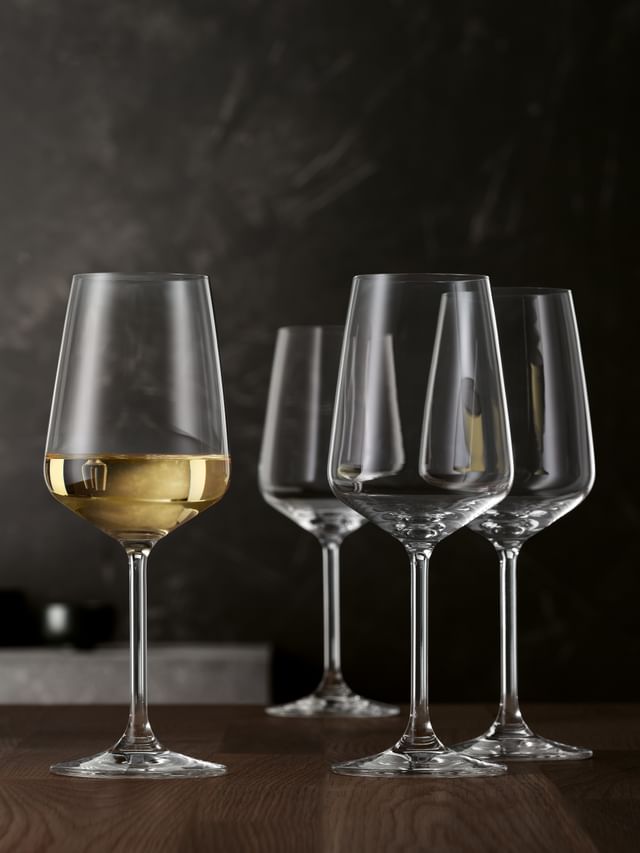
White wine
White wine is best known for being fresh, vibrant, and perfect for sipping on a summer's day. White wine's color, which can range from a pale straw color to a deep golden hue, is achieved by keeping the contact time between skin and juice to a minimum after pressing the wine grapes (the longer the skin is in contact with the juice, the more the color from the skin will stain into the juice). White wine often uses green or yellow grapes like chardonnay or sauvignon blanc. However, dark-skinned grapes can also produce white wine, provided the grape juice is separated from the skins immediately after pressing.
Light-bodied white wine
Light-bodied white wines are some of the easiest to drink, so they often suit people just starting their wine journey. Light-bodied wines are usually light, crisp, acidic, and relatively low in alcohol (typically 8-12%). These wines are generally young, with fresh flavors and subtle floral aromas, making them perfect for sipping on a summer's day alongside light meals like salads or grilled seafood.
Some well-known examples: sauvignon blanc, pinot grigio, dry riesling.
Full-bodied white wine
While full-bodied wine is more associated with red varietals, it sometimes comes in the form of white wine. Full-bodied white wines usually undergo aging techniques to help them develop a greater depth of flavor. The best-known aging technique is arguably oak-aging, a process that involves aging the wine in barrels to alter its character, often reducing the wine's acidity, giving it a richer, creamier texture, and adding notes such as vanilla, caramel, and various spices to its aroma profile.
Like lighter-bodied white wines, full-bodied white wines pair nicely with seafood and white meat dishes, but their richer complexion makes them better for dishes like roast chicken or turkey, or a creamy seafood pasta.
Some well-known examples: oaked chardonnay, viognier, semillon.
Sweet white wine
Sweet white wines are like to make themselves known. With strong perfume notes and a distinctive richness on display, these wines possess a high residual sugar content, giving them their signature sweet profile.
Some typical notes found in sweet white wines include honey, apricot, peach, plus some floral notes. To balance their intense sweetness, these wines often possess a moderate acidity, keeping them refreshing and more drinkable.
Sweet white wines are quite broad in their food pairing appeal. You can enjoy them alongside a similar sweet dish, such as an apple pie, but they can also be used to balance spicy dishes like curries, or in harmony with fatty foods such as pâté or cuts of prosciutto.
Some well-known examples: moscato d’asti, gewürztraminer, riesling (off-dry to sweet).
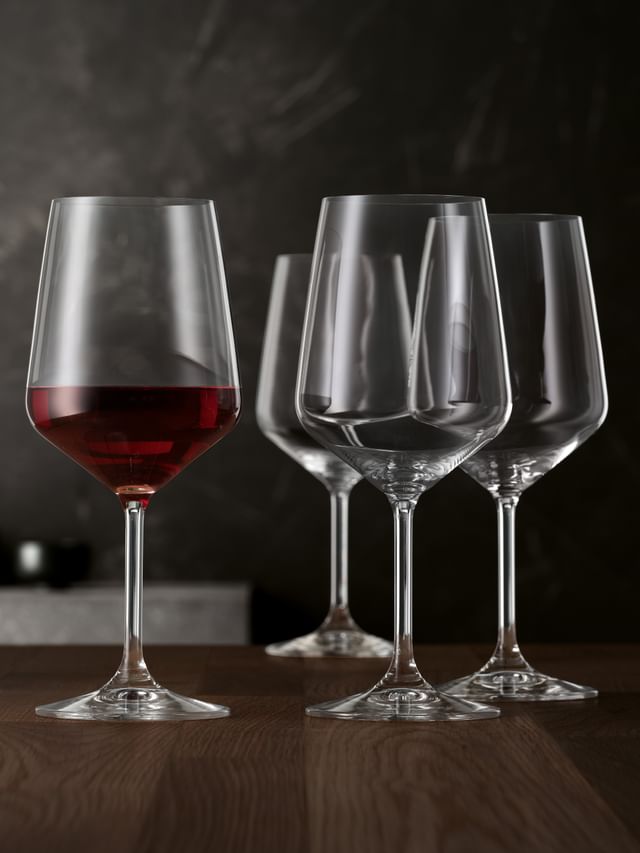
Red wine
Red wine can range in color from a pale ruby to a deep purple. These rich colors are achieved by keeping the skins in contact with the juice during fermentation, allowing the skins to impart their color, tannins, and flavors into the wine.
Light-bodied red wine
Light-bodied red wines are great entry wines for those looking to get into red wine but can find fuller-bodied reds slightly overwhelming. Light-bodied red wines are delicate, relatively low in tannins (tannins are responsible for that astringent, dried-out sensation that coats your tongue after you sip some wines), and lower in alcohol than some wines, making them the easiest sipping red wines for many people and a good red wine style for beginners.
Typical flavors you can expect to experience when sipping low-bodied red wines include red fruits like cherries, strawberries, and raspberries, as well as subtle earthy and floral aromas. These light, fresh qualities make them ideal for pairing with roasted white meats, cured meats, grilled vegetables, and soft cheeses.
Some well-known examples: pinot noir, nebbiolo, gamay.
Medium-bodied red wine
Medium-bodied red wines turn up the tannins a little while retaining some of the smoothness associated with lighter-bodied reds. These wines often exhibit bolder spices, more ripened red fruit flavors, and a higher alcohol content than lighter-bodied red wines.
The balanced strength and structure of medium-bodied red wines make them incredibly versatile when it comes to food pairings. You can sip these wines with a rich ragu recipe, a varied cheeseboard, or a variety of roasted vegetables.
Some well-known examples: merlot, tempranillo, sangiovese.
Full-bodied red wine
On to the strong stuff: full-bodied red wines are rich, intense, and full of character. They are high in tannins and alcohol content, display clear dark fruit flavors, and often contain vanilla, leather, tobacco, and dark chocolate notes.
Despite not being to everyone's liking, full-bodied red wines are some of the most popular wines on the planet, with cabernet sauvignon consistently coming out on top as the world's most popular wine. If you're one of the many people who will be enjoying a full-bodied red wine with dinner, be sure to pair it with something that can stand up to its bold character. Some popular choices for pairing with these wines are grilled or roasted red meats, pungent, aged cheeses, hearty pasta dishes like bolognese, and rich dark chocolate desserts.
Some well-known examples: cabernet sauvignon, syrah/shiraz, malbec.
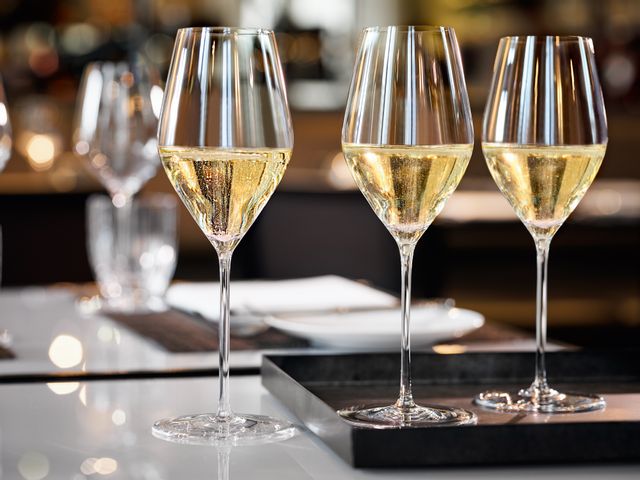
Sparkling wine
Sparkling wine delivers some of the most regal wines around. This style of wine is made by using secondary fermentation to trap CO2 inside the bottle (see our champagne blog for more details on this), resulting in a carbonated wine.
Sparkling wine typically exhibits a bright and refreshing acidity, and notes of apple, citrus, and pear, along with floral aromas. Sweetness can vary, with sweet sparkling wines pairing well with things like spicy dishes and sweet, light desserts, while dry sparkling wines pair better with the likes of seafood, fresh fruits, salads, and light pasta dishes.
Some well-known examples: champagne, cava, prosecco, English sparkling wine.
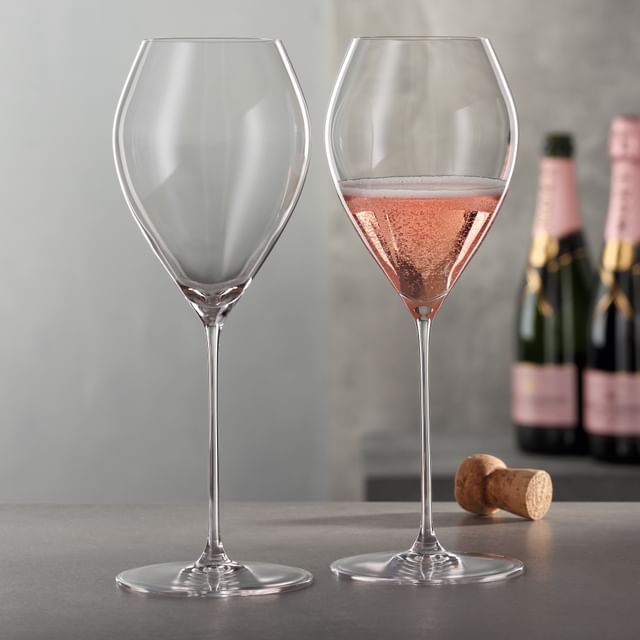
Rosé
The variety of different pink hues exhibited by various rosés can be achieved through a few different methods:
- The maceration method is the most common way of making rosé. It involves using dark-skinned grapes and keeping the skin in contact with the grape juice for a short time - usually between a few hours and 48 hours. The skin is then separated from the juice, leaving the juice with a pink color imparted from the skin.
- The saignée method involves bleeding some juice off a batch of grapes being used to make red wine. The rest of the juice continues to be made into red wine, while the bled-off juice is made into rosé wine.
- The direct press method of producing rosé wine involves using dark-skinned grapes and draining the juice off the skins almost immediately after pressing. This results in rosé wine with only a slight pink hue, although red wine is sometimes then added to darken the wine further.
- The blending method involves combining red and white wine to produce a rosé wine. This method is less common and is most often used to make rosé champagne.
The different approaches towards making rosé wine mean these wines vary in character, but some common qualities are often seen in various rosé wines. For example, rosé wines are generally aged in steel tanks, keeping them fresh and fruity, while red fruit and floral notes are commonly found in the wines' aromas.
Some well-known examples: zindandel rosé, provence rosé, champagne rosé.
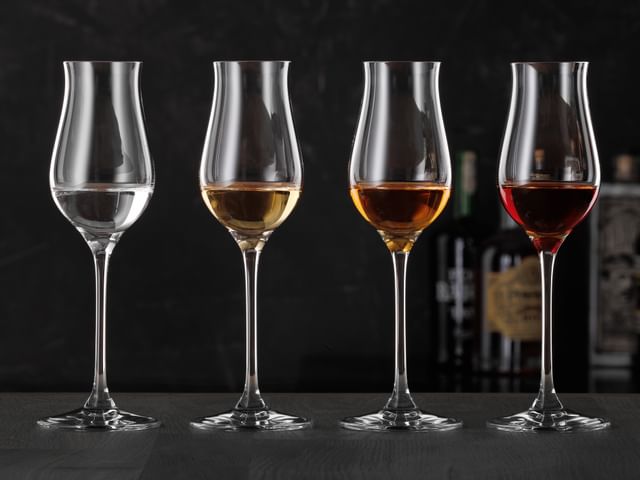
Fortified wine
Fortified wines, such as port and sherry, are made by combining wine with a distilled spirit (typically brandy) either during or after the grape juice has fermented to make a wine with a stronger ABV. Typically, fortified wines range from 15-22% ABV, illustrating their greater average strength.
Fortified wines vary depending on when the spirit is blended with the wine. For example, port adds brandy to wine before fermentation is complete, resulting in a sweeter wine due to the unfermented sugar remaining in the grape juice. In contrast, sherry is usually drier, as the brandy is mixed with the wine after fermentation, by which point most of the sugar has been eaten up.
Some well-known examples: port, sherry, madeira.
There's much more to learn as you continue your wine journey, but the above provides a useful starting point for those looking to get the ball rolling. For guidance on choosing the right wine glass for your favorite wines, check out our blog on discovering the right Spiegelau glass for you.
Locations